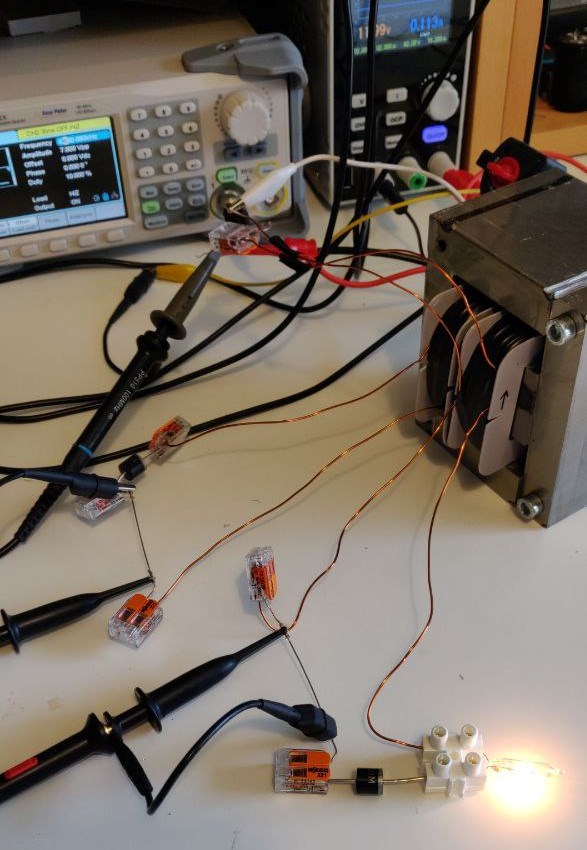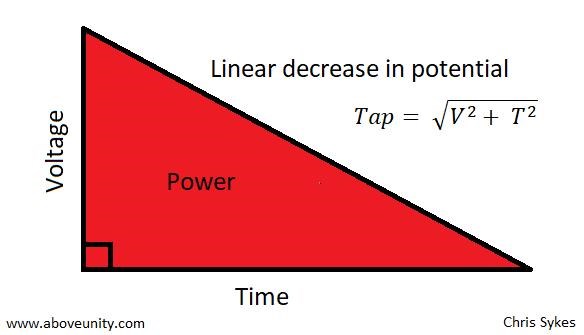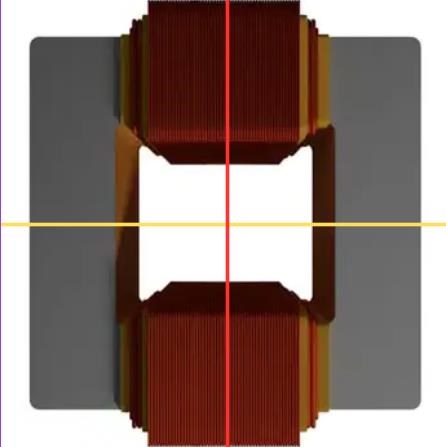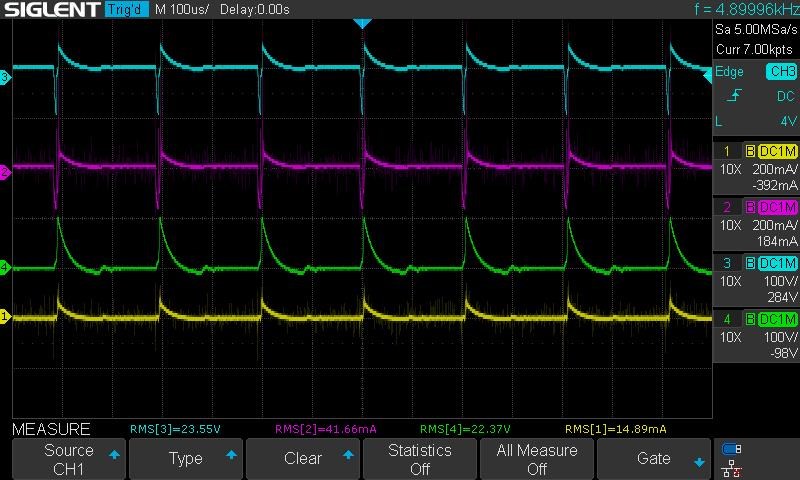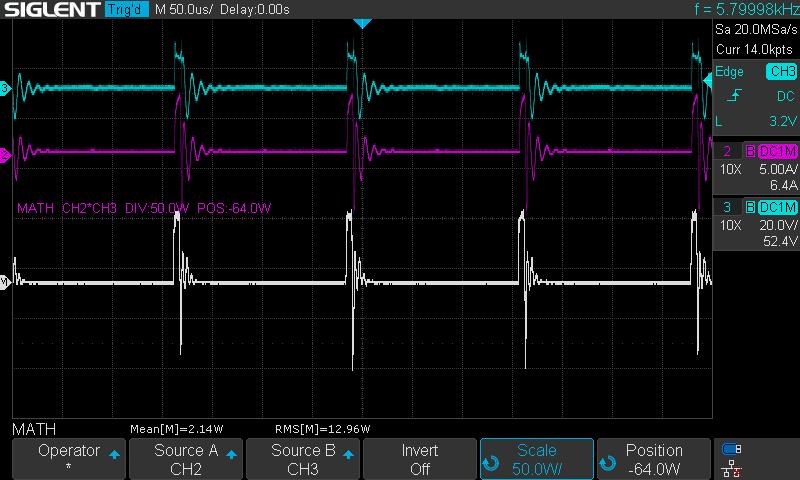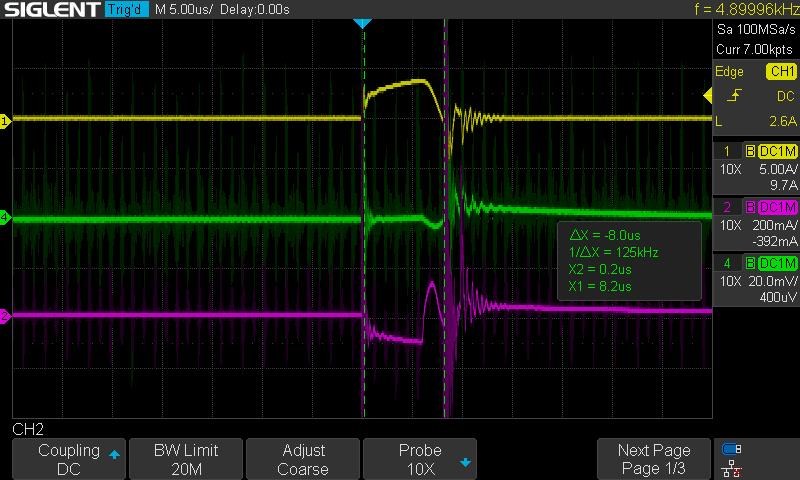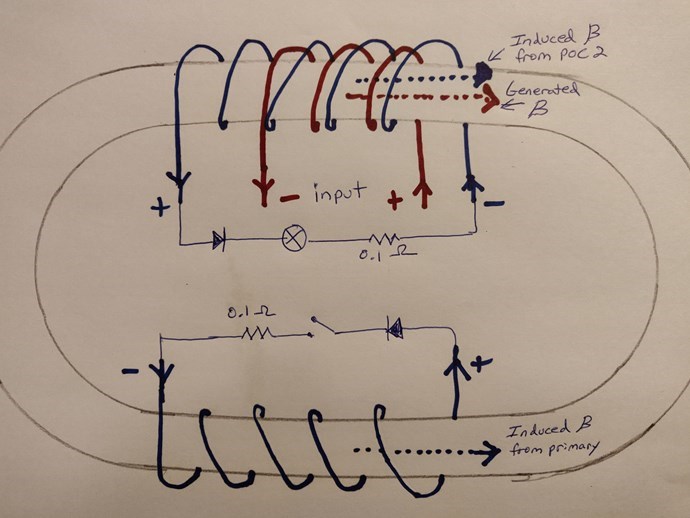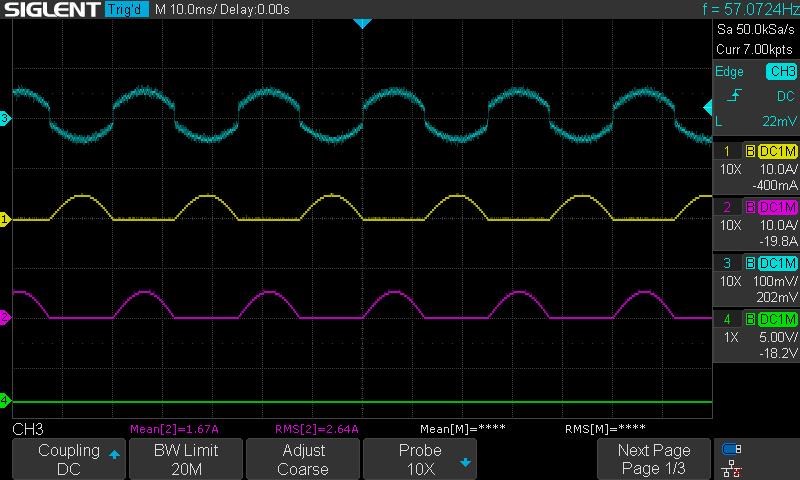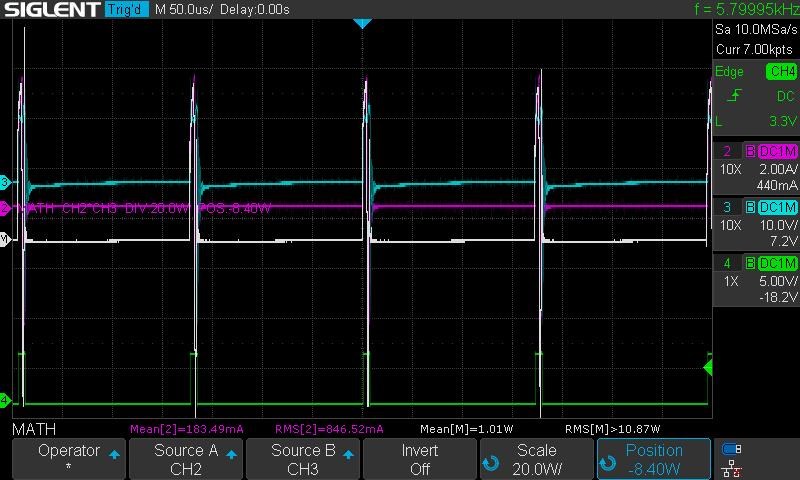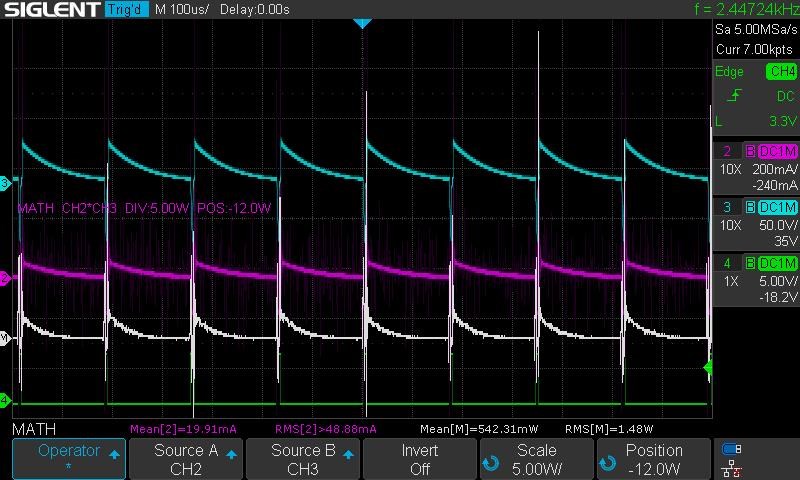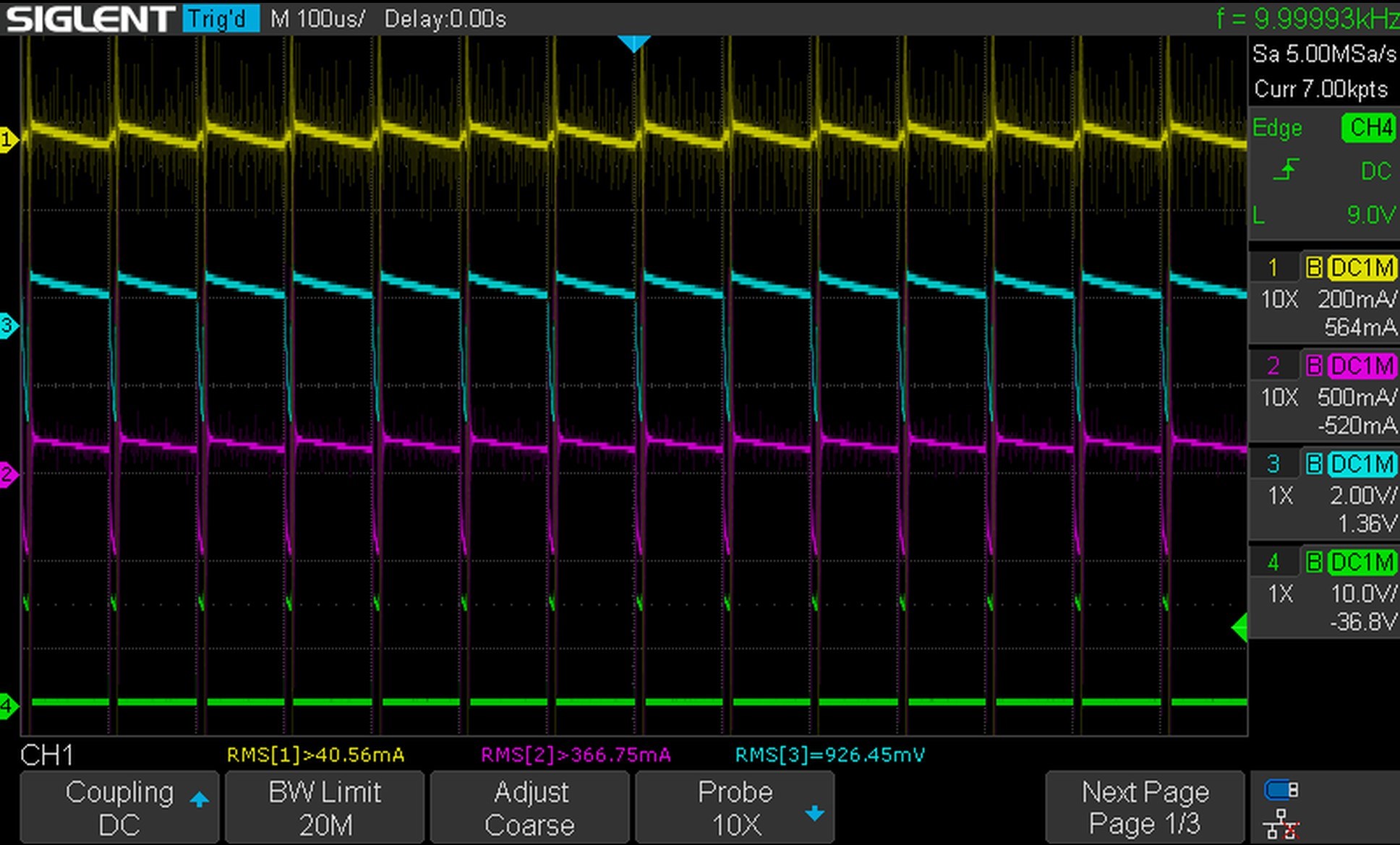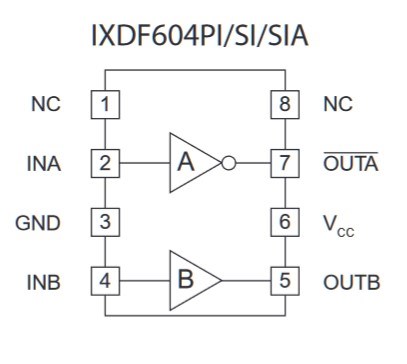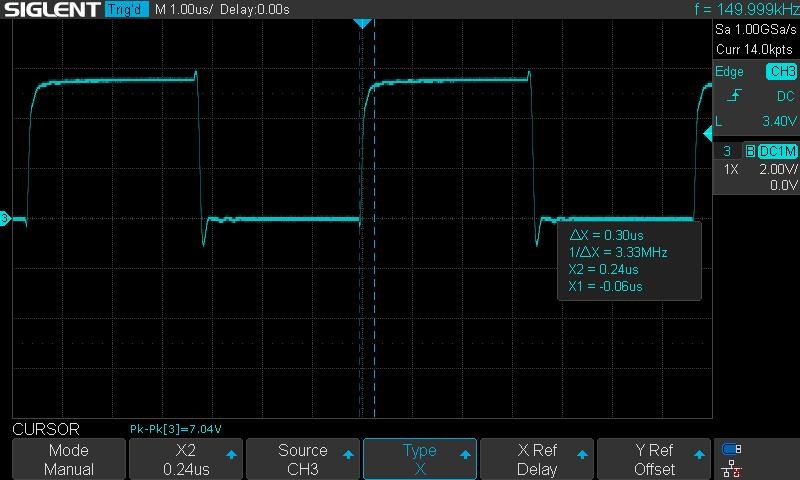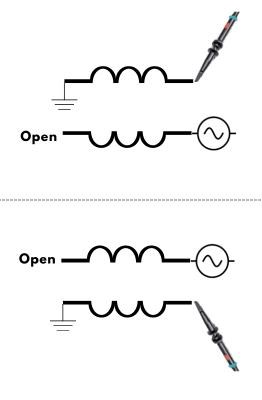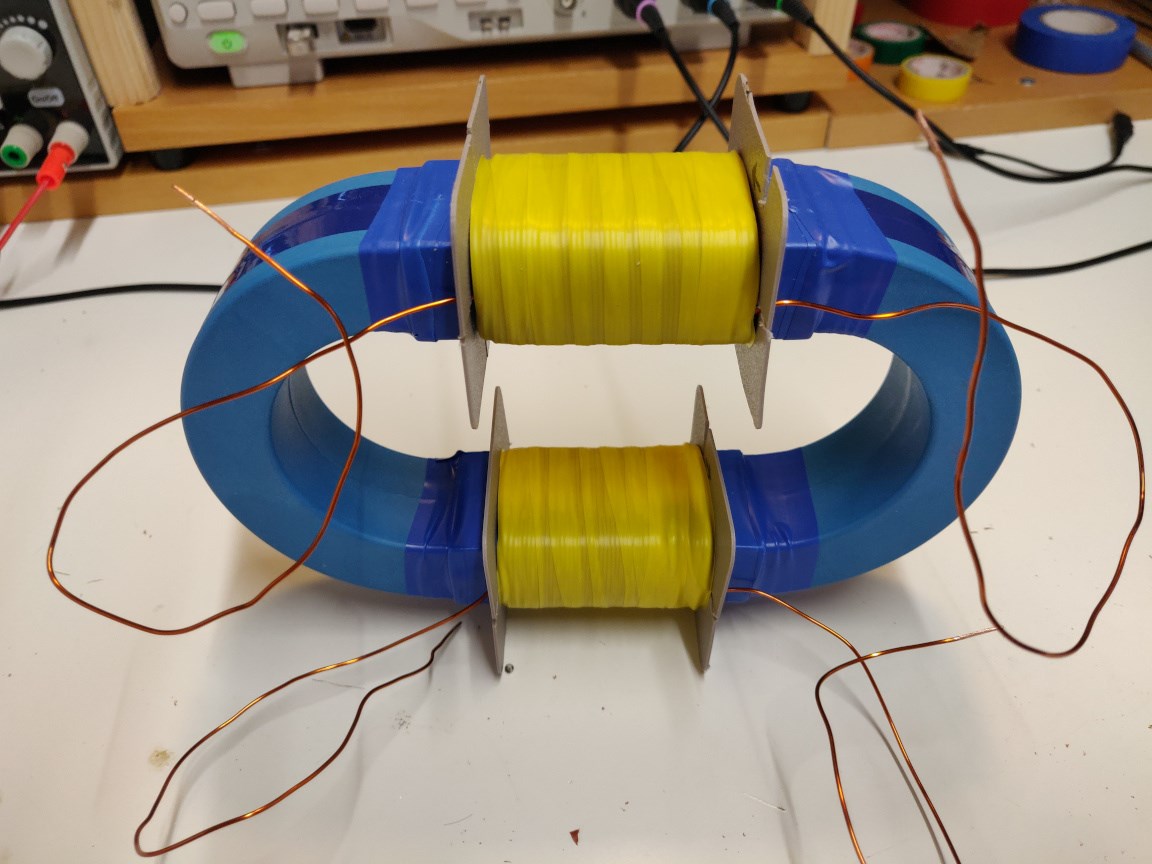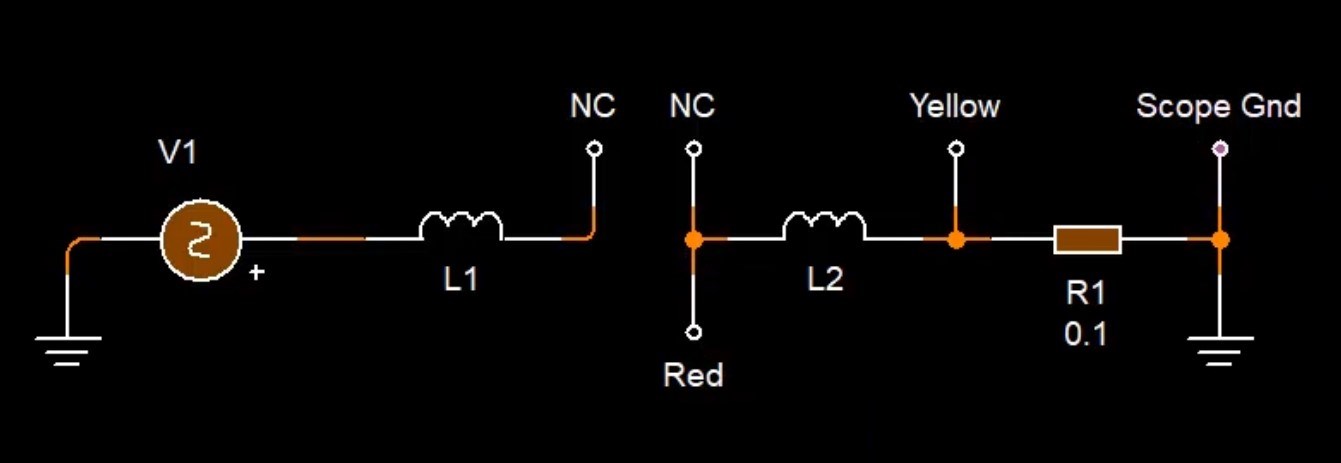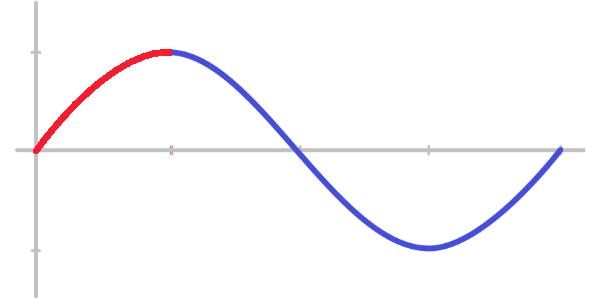I'll start this thread more or less for my documentation and a bit of questioning. I've been reading a ton and going over the videos several times. However, I'm pretty sure I don't have this correct yet. And I'm pretty sure I'm starting to confuse myself. 🙂
L1 is the input, 20 turns clockwise of 0.8mm wire. It's wrapped over, the same direction clockwise, mutually inductive, to L2, which is 140 turns of 0.8mm wire. L3 is next to these, also 140 turns of 0.8mm wire, but wrapped counter clockwise. The lamp is on L2.
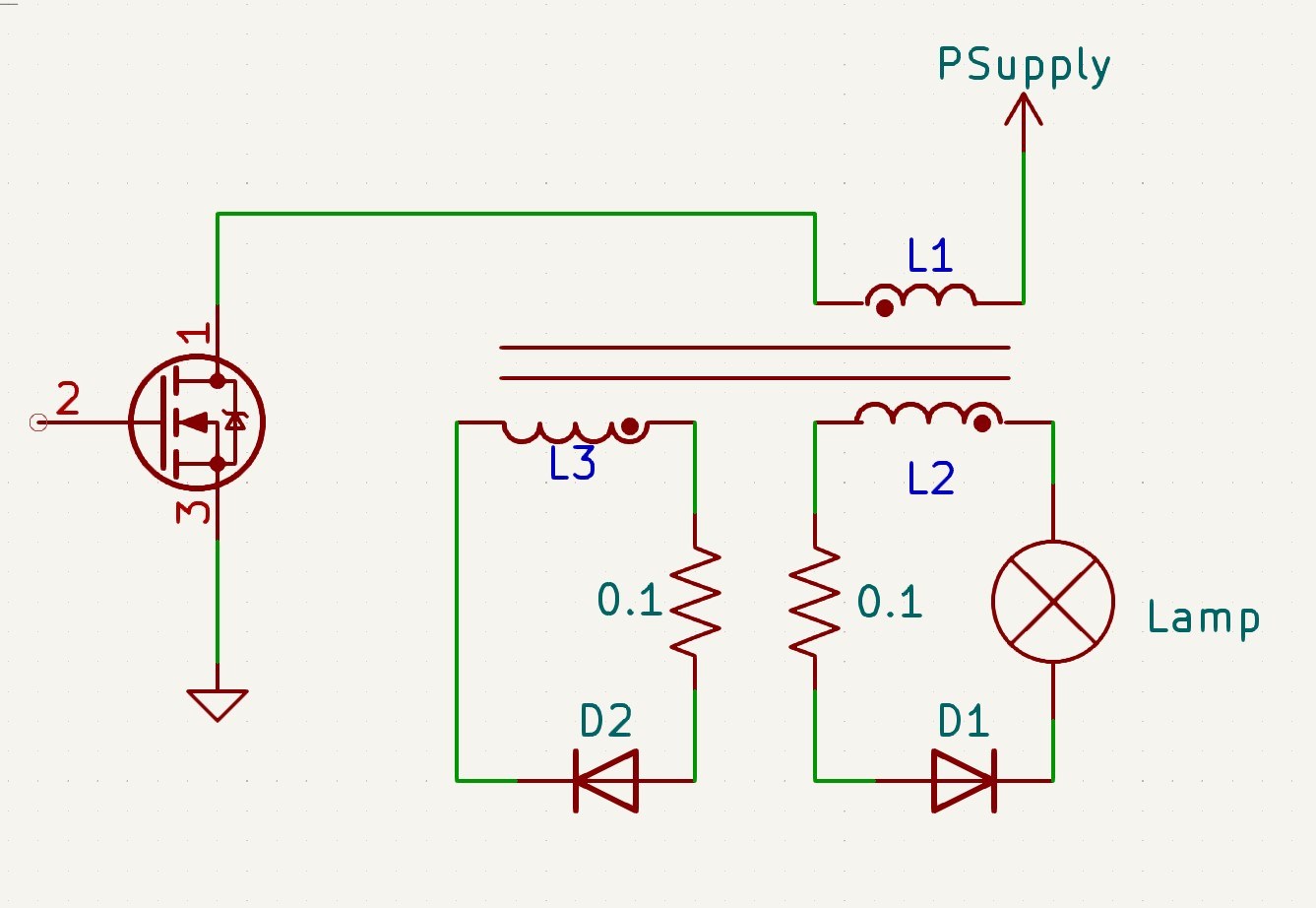
The pictures were taken at about 5.6 KHz, nevermind what the scope screenshot says, the counter was all over the place. I'm pulsing 12v from a power supply at 10% duty cycle. Yellow and purple traces are L2 and L3. L1 voltage is the blue trace.
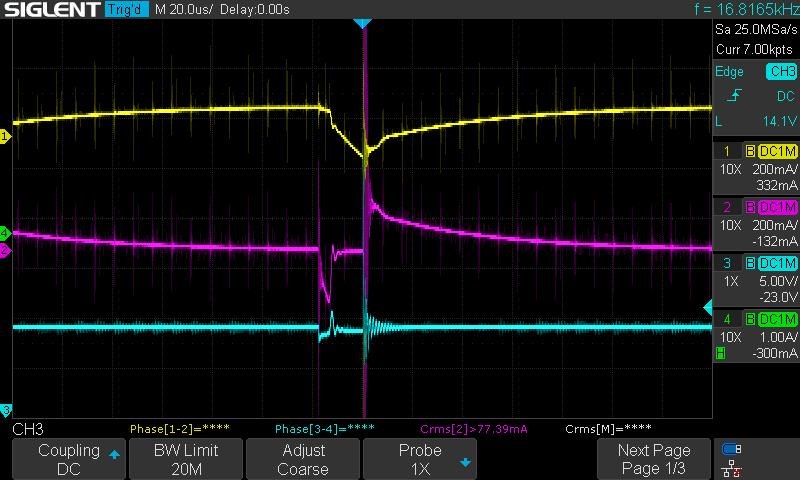
The core makes horribly loud 8-bit video game music while I'm messing with frequency ranges, so I assume some bucking is taking place. But the scope shot doesn't look right, not sawtooth enough. I noticed comments on Madscientist's recent experiments about polarities and the exponential curve instead of sawtooth, but I believe I have my diodes correct. Still, not really seeing magnetic resonance I think.
Correct me here, I'm wrong somewhere I'm sure. The input coil raises the magnetic field, north pole to the left side as it's wound clockwise from the right. Current flows in L2, the same direction, and when L1 is turned off, what is left is the magnetic field which will want to collapse and create current the opposite direction, creating a north to the right side. But then the diode is wrong, as it would be blocking the current from the collapse. UNLESS, we see a flip of current polarity because of the magnetic resonance, Mr Preva. In that case, then we have the currents, and magnetic fields from L2 and L3 opposing, and we should see the sawtooth waveform. But I was under the, possibly ignorant, impression that the Mr Preva experiment worked because of the mismatch of coil turns, 7 to 11 I believe it was. But on these coils we want matching turns, in my case 140 to 140 turns, correct? Because we want matching magnetic fields when loads are applied, for a maximum fight against each other. Again, correct me if I'm wrong please.
So, again, I think I might be seeing a tiny bit of magnetic resonance, but not enough. I need to pick up a few new printed bobbins from a friend this week, but I will increase the turns on L2 and L3 to bring up the magnetic fields, maybe 200 or 250 turns to start. Also, I'll try to increase turns on L1 so more magnetic field is delivered. Maybe overdo that too a bit, so I can walk it down a few turns at a time to see what is best. In the meantime, any advice or pointers would be completely acceptable. 🙂
I'll update more soon. And this has been fun getting back to research, so thanks to everyone that has contributed.
Marcel
